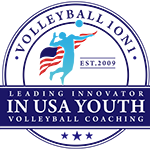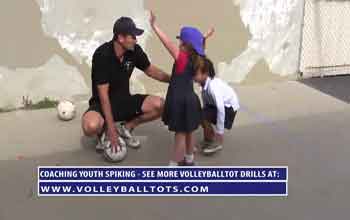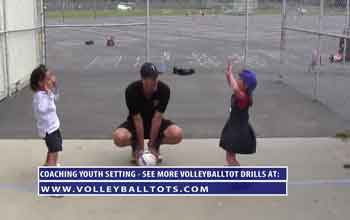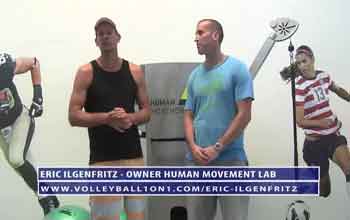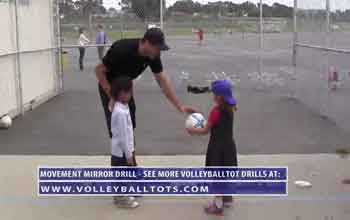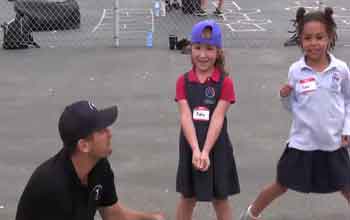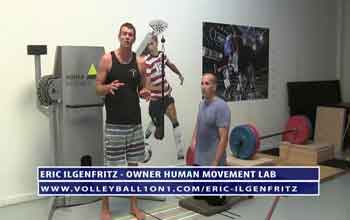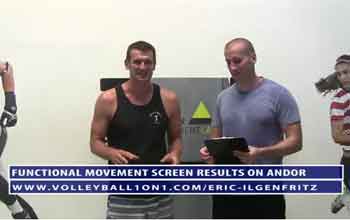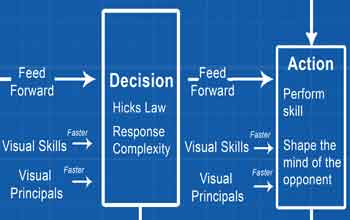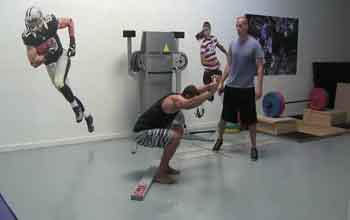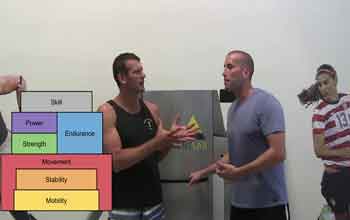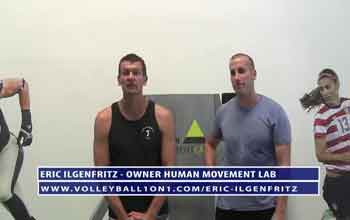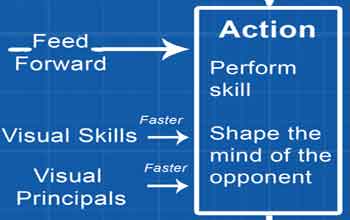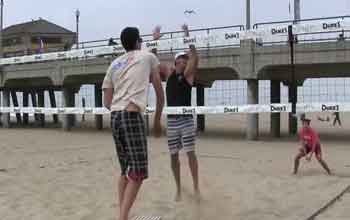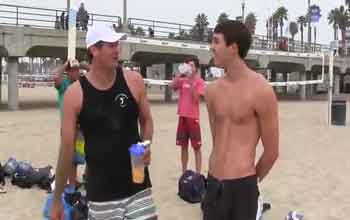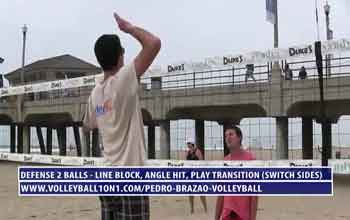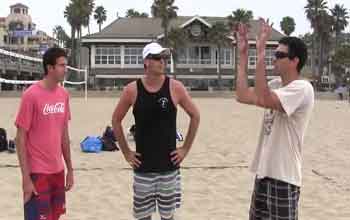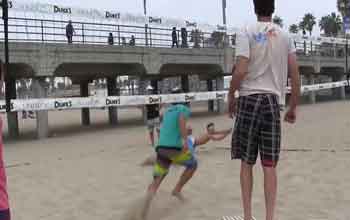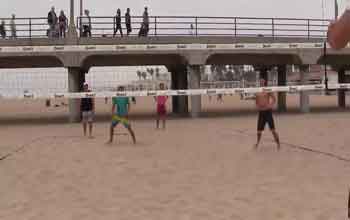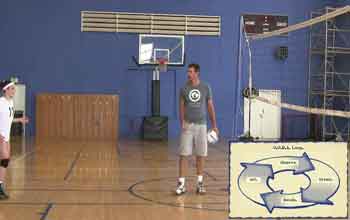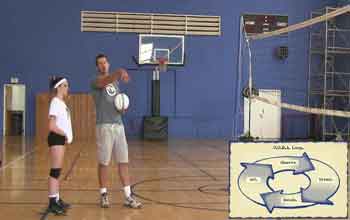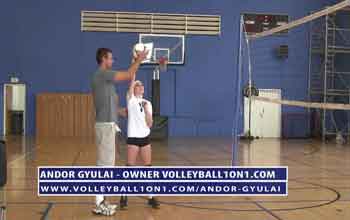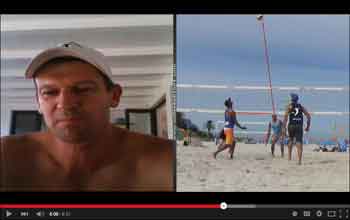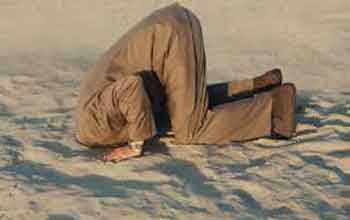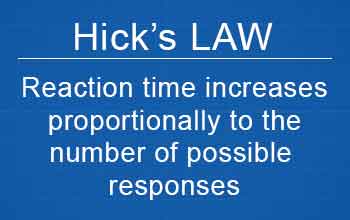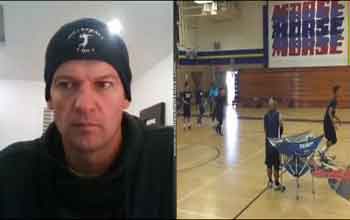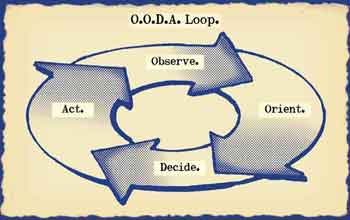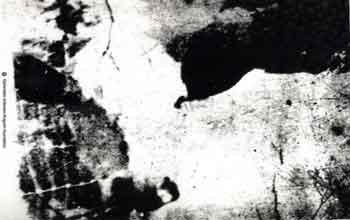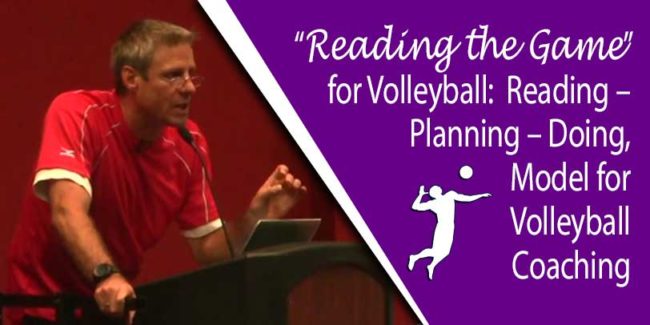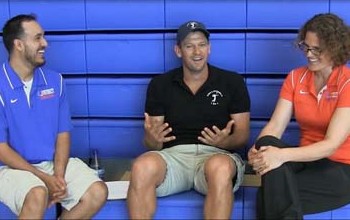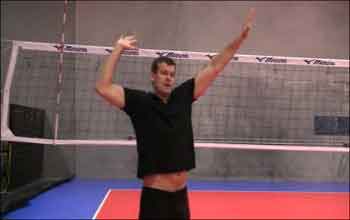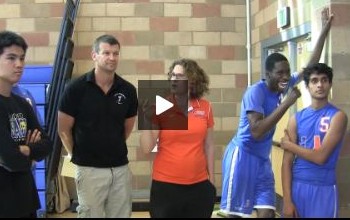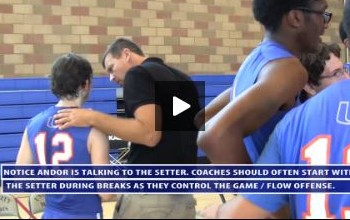Volleyball1on1 instructors and coaches teaching volleyball coaching, drills, skills, videos, technique, online courses and practice planning for high school, club and college coaches. Also offering volleyball camps, clinics, lessons, and player evaluations to help improve your volleyball individual and team skills.
In this VolleyballTots Youth Private Coaching Lessons Andor Gyulai the owner of volleyball1on1.com teaches two young players age 5 the skill of spiking. The video includes powerful verbal cues, plus other coaching lessons on working and coaching volleyballtots.
In this VolleyballTots Youth Private Coaching Lessons Andor Gyulai the owner of volleyball1on1 teaches two young players age 5 the skill of setting. The video includes powerful verbal cues, plus other coaching lessons on working and coaching volleyballtots.
This video features Andor Gyulai and Eric Ilgenfritz discussing Andor’s test results from the functional movement screen. This video is extremely insightful and will offer incredible insights into the new science of volleyball training and injury prevention.
In this Volleyball Tots private youth volleyball coaching lesson Andor Gyulai teaches two young players age 5 how to shuffle and move correctly when passing. The drill is call the mirror movement drill and it is a great drill to help young players not only learn to move in a shuffle position, but also the importance of reading where the ball is going and move based upon the ball. location. The movement mirror drill is fun and can be done between two young between the ages of 5-12 or a parent and their child.
In this VolleyballTots Youth Private Coaching Lessons Andor Gyulai the owner of www.volleyball1on1.com teaches two young players age 5 the skill of passing. The video includes powerful verbal cues, plus other coaching lessons on working and coaching volleyballtots. This video was filmed at Andor kids school in Los Angele’s where he teach a volleyball class for youth players ages 5-12.
Core exercises are critical to increasing performance and avoiding injuries when playing volleyball. Chopping exercises improve core rotation strength which is critical to more effectively transfer force between your upper and lower body, and ultimately spike harder, jump higher and move faster. Building core rotational strength in the critical core muscles stabilizes your spine, allowing you to be more balanced as you move on the court.
In this video Volleyball1on1 Owner Andor Gyulai is given his results from a Functional Movement Screen (FMS) performed by Eric Ilgenfritz. The Functional Movement Screen is a ranking and grading system that documents movement patterns that are key to normal function.
Volleyball players organize their movement patterns when performing a volleyball skill in advance. As the action or skill gets more complex so the reaction time increases as more time is required to organize the system for movement initiation. In this post we explore the idea and give examples.
The Functional Movement Screen: “Put simply, the FMS is a ranking and grading system that documents movement patterns that are key to normal function. By screening these patterns, the FMS readily identifies functional limitations and asymmetries. In this video Eric takes Andor Gyulai through the screen and reveals some major movement functional limitations and asymmetries. These problems if untreated will cause volleyball injuries and strength gain limitations.
This video is an introduction to the new science behind musculoskeletal systems training for volleyball. The video features Eric Ilgenfritz of Human Movement Lab as he explains the concepts behind Functional Movement Systems and the Functional Movement Screen. In the video Eric explains the sports / volleyball training hierarchy of Mobility before stability, stability before strength, strength before power, and power before volleyball specific skill.
This video is an introduction to functional movement training with Eric Ilgenfritz on Volleyball1on1.com. Andor Gyulai the owner of Volleyball1on1 in his quest to play on the FIVB sought out experts to help him get stronger physically as well as avoid injury. Eric and his training systems were an important part of Andor’s training especially as it relates to volleyball injuries. By following Eric’s advice Andor within just 2 months was able to sort out his lower back, knee and shoulder pain injuries.
In volleyball, sports and war shaping the mind of your opponent is critical to winning. John Boyd described as the most influential military theorist since Sun Tzu created the OODA Loop combat training system as a better way to attack the mind of your enemy and win. This proven and tested system is the foundation of most military strategy today and has literally been tested in the trenches to win above all others.
This beach volleyball defense drill features two balls, a line pull and a angle block with a line defense. Each play is played out and the coach Pedro Brazao is hitting off a bench. This video features allot of good verbal cues as well as some good coaching feedback for line defense with an angle block as well as some tips on pulling when blocking.
What’s better to train in for beach volleyball, deep or shallow sand? In this video Andor Gyulai and Miles Evans talk about the difference between training and playing in Manhattan Beach verses Huntington Beach.
This video contains beach volleyball coaching tips for blocking shots plus a 2 ball defense drill with a block and a dig with Brazilian Coach Pedro Brazao coaching. This video is extremely insightful as Pedro discusses a common mistake players make when trying to block shots in beach volleyball. His answer is on point and easy to understand.
This video contains volleyball coaching advice for beach volleyball blocking. Additionally Pedro gives us a quick review of the players skill level and some thought on things the players should improve.
Please keep in mind all the players except Andor Gyulai (Volleyball1on1 Owner) have represented United States for Beach Volleyball. What this means is you are getting to watch and almost semi pro level practice and what the top players do to get better during their volleyball practices!
This 3rd beach volleyball drill (In Pedro Brazao Practice) is a 2 ball beach volleyball defense drill featuring a line block and angle defense with beach volleyball coach Pedro Brazao attacking from a bench to simulate a real attack. The players play the defense out off the dig but not off the block. The players are now starting to get warm and as a result the playing level in the drills and intensity is increasing.
This is a beach volleyball warm up drill that features 2 balls, that are game like serves, 1 for each player with a line shot after the dig and set. This is a great game like drill that features 3 of the most important skills for a player to work on as well as really helps with spacing, which is critical for new teams and beach volleyball.
Physical orientation meaning where you are before you perform a volleyball skill is often critical to performing the volleyball skill correctly. With spiking where you start your approach to hit is often as important as your approach or your spiking technique. Yet few volleyball coaching models account for how players are taking in stimuli “Reading the Game” and reacting to that stimuli before performing the volleyball skill. The OODA Loop and my Modern Volleyball Coaching Blueprint is different as your physical orientation is constantly being accounted for in my model while performing the volleyball skill.
This article contains a video example and verbal cues of how Andor Gyulai teaches volleyball spiking technique using the OODA Loop.
This video series is from a recent private 1 on 1 lesson with a youth player (Age 13) from Arizona who visited Andor Gyulai for a paid private volleyball coaching lesson. This video offers and incredible amount of feedback on correct volleyball spiking technique. The amount of feedback is almost overwhelming and as such we recorded the lesson for the player and her parents to review later.
In this video Andor Gyulai points out some common beach volleyball blocking mistakes to avoid. This video also includes tips for “reading the game”, pulling and beach volleyball strategy. This video was filmed in South Africa on his recent trip from Dec 2014 – Feb 2015.
I would like to share an easy to use and easy understand example of how to OODA Loop your opponent using Hick’s law. This example was used on me initially quite effectively by my good friend Colin Pockock (Age 44) in South Africa who is a former beach volleyball Olympian who took a 9th at the 2004 Olympics. I think he is the best beach player in South Africa volleyball history.
Human reaction time is defined as the time elapsing between the onset of a stimulus and the onset of a response to that stimulus. A primary factor affecting a response to stimuli is the number of possible stimuli or in volleyball’s cases what you “Read” your opponent doing. In 1952 a researcher named Hick confirmed that by going from one response choice (Decision Step) to two, response time increased by 58%…
This is an youth online volleyball spiking lesson Andor Gyulai (Owner – Volleyball1on1.com) did for a member of our site as part of our membership benefits. This is a great video for youth players looking to spike better. This video reveals many common mistakes we see youth players make when attacking.
Today I want to share what is a fundamental shift in the way I feel volleyball should be taught! The ideas I will be sharing today build on coaching concepts first introduced by Karch Kiraly and others known as “Reading the Game”. After over 3 years of research through my own observations as a player…
After over 3 years of research through my own observations as a player and coach I realized the Reading – Planning – Doing system can be vastly improved, specifically how we as coaches teach players the process of how we as humans respond to stimuli (predominantly with our eyes), which is the basis of how all volleyball skills and sports are performed.
Did you know one of the biggest breakthroughs in the “science of coaching volleyball” today is called “Reading the Game”? Most of the ideas related to this were first introduced by Karch Kiraly (considered the greatest volleyball player in the sport) on his retirement and transition into coaching just a few years ago during a presentation at an AVCA Convention in San Antonio, Texas.
In our work with Dr. Bill Harrison (Sports Eye Doctor to Top Sports Stars) we have discovered humans cannot think and see at the same time! Yet many coaches ignore this fact and because of their own coaching styles and lack of knowledge about vision actually negatively impact their players on the court during matches.
I recently hit over 2 million views for my videos on the subject of spiking on YouTube. Naturally I am always surprised and humbled because when I started Volleyball1on1 my goal was to just film the best players and coaches in the world and never did I think my videos would be some of the most popular. Today I am going to share some of these video including some of my favorite that I think are really good but have not become popular.
This is the end match team review at Uni High. You will notice Kerri really trying hard to ask open probe questions in order to engage the players. In evaluating I think most viewers will agree she is soliciting more interaction and engagement from the team than she did in the past.
This video was filmed between Set 1 and Set 2 of the match. This is another powerful video which reveals how Andor makes the most use of the limited time focusing on specific players and goals as well as changing the collective energy of the group. Again you will notice the Socratic method of coaching and how Andor takes the players down a path that he wants. This video shows how brilliant coaches interact with their team changing the collective energy during breaks.
